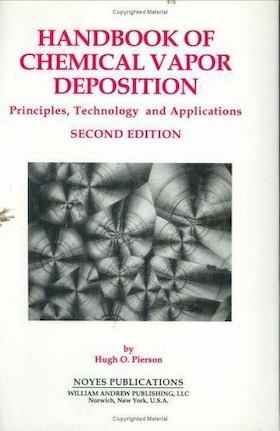
-----
Enhancing the reflectivity of mirror polished stainless
1998
Are there any ways to enhance the reflectivity of mirror polished stainless? We specialize in mirror polished stainless steel sheets. Surface quality is close to a glass mirror, but reflectivity wise, it tested at only 62-63%. Type of stainless involved are 304 and 316.
Thank in advance for comments and suggestions.

Michael Liu Taylor
specialty stainless steel distributor - Dallas, Texas
by Donald Mattox

on eBay or Amazon
or AbeBooks
(affil link)
I am afraid that chromium has a naturally high adsorption for solar radiation. To increase the reflectivity you will have to change the composition of the surface. Silver has about the highest solar reflectance but aluminum is good.
Donald M. MattoxSociety of Vacuum Coaters
Albuquerque, New Mexico
"Handbook of Physical Vapor Deposition (PVD) Processing" (2010) [on AbeBooks or eBay or Amazon affil links]
and "The Foundations of Vacuum Coating Technology" (2018) on AbeBooks or eBay or Amazon affil links]
I have been trying to develop a mirror for outdoor use (on a sundial) that will withstand the rigors of weather. Would bare Stainless steel retain a good surface mirror over many years? How about chrome plated, or nickel plated stainless steel? I have tried hard gold plating, but it seemed to dull easily. I have had some luck with rhodium, but it chipped off the underlying nickel plated steel too easily, and is expensive. Bill Gottesman
William Gottesmansundials
1999
Bill, IMHO, you can't beat stainless for corrosion resistance in exterior applications. Mirror polished stainless are used in many exterior applications. Titanium gold colored stainless (TiN) are used in signage system on high rise buildings. Ti gold will outlast gold plating on automobile applications. Clean stainless steel surface will self generate a oxidizing layer to protect itself from rust and corrosion.

Michael Liu Taylor
specialty stainless steel distributor - Dallas, Texas
1999
Mike, while Silver and/or Rhodium are probably the best metals to use for visible light reflectance with reflectivity of rhodium often above 90% and have excellent wear/environment protection, they are expensive. An economical choice yielding moderate to good performance is a hi-phosphorous electroless nickel with reflectivity about 80%+ it is often used to protect against corrosion in marine environments and as a surface coat for many precision optical components. Many e-less nickels will pass 1000 hr. salt fog tests
Anthony J. Coveyelectroformer - Corona, California
1999
on -- Don Mattox wrote "I am afraid that chromium has a naturally high adsorption for solar radiation. To increase the reflectivity you will have to change the composition of the surface. Silver has about the highest solar reflectance but aluminum is good. "
The quest for one piece metal solar mirrors goes on. What would be extremely useful for photovoltaic concentration is a mirror that reflects UV but not infrared. What is the absorption spectrum of chromium? Even if stainless is lower in total reflectance than aluminum or silver, if it reflects heat differently than UV it has an excellent application.
Robert Carlsonmfr solar mirrors - Pt Richmond, California
2003
Apparently, the "shininess" of nickel chrome electroplating has more to do with the smoothness and leveling of the nickel plating than with the solar reflectance. Chromium plating is used for solar collectors rather than reflectors, although the absorbtivity can be optimized further with "black chromium" plating.

Ted Mooney, P.E.
Striving to live Aloha
finishing.com - Pine Beach, New Jersey
Ted is available for instant help
or longer-term assistance.
Hello, what about the reflectivity of mirror finished 316 in infrared? Is there any instrument to easily measure it? Thanks.
- Italy
September 21, 2011
Q, A, or Comment on THIS thread -or- Start a NEW Thread